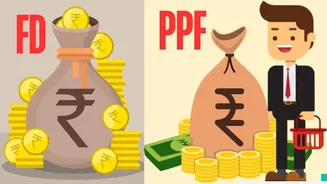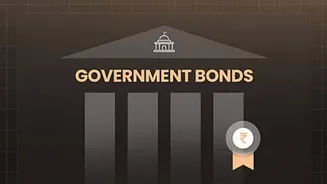Inflation's Impact on Loans
The relationship between inflation and loan EMIs in India is significant and directly impacts borrowers. The Consumer Price Index (CPI) is a key metric;
it reflects the average change over time in the prices of goods and services. A lower CPI often suggests that the cost of living is decreasing or growing at a slower pace, which puts downward pressure on interest rates. When inflation is low, the Reserve Bank of India (RBI), the country's central bank, may consider cutting the repo rate. The repo rate is the interest rate at which the RBI lends money to commercial banks. A reduction in the repo rate typically leads to lower interest rates on loans, which then affects the EMIs (Equated Monthly Installments) borrowers pay. It's crucial for borrowers to understand these economic dynamics to anticipate potential changes in their loan repayments and make informed financial decisions. The implications of these changes can be substantial.
RBI's Monetary Policy Moves
The Reserve Bank of India (RBI) plays a pivotal role in shaping the financial landscape, particularly regarding interest rates and, subsequently, loan EMIs. The RBI's monetary policy is frequently employed to manage inflation and stimulate economic growth. When inflation reaches a record low, the RBI has the option to cut the repo rate. This rate decrease makes it less expensive for commercial banks to borrow money, and they can then pass on the savings to consumers. Banks might decide to decrease their lending rates for various types of loans, like home loans, car loans, and personal loans, in response to a reduced repo rate. Regular announcements of the monetary policy are made by the RBI, and these play a crucial role in shaping market expectations and impacting borrowing costs across the economy. Understanding the RBI's strategy and the reasoning behind its choices allows borrowers to better anticipate how their EMIs might vary.
Loan EMIs: What to Expect
Borrowers in India have a lot to look forward to when inflation is at an all-time low. If the RBI decides to reduce the repo rate, it's possible that loan EMIs will become more affordable. Lower interest rates mean lower monthly payments for the duration of the loan. However, it's important to remember that not all lenders instantly pass on the benefits of rate cuts. Some banks may take time, while others may not lower their lending rates as much as the repo rate falls. Therefore, borrowers must regularly monitor their loan agreements and the financial news to understand how these moves are influencing the rates they pay. Analyzing the details of loan terms, including the type of interest rate (fixed or floating) and the loan tenure, will provide a more detailed understanding of the potential advantages. Being proactive and well-informed enables borrowers to effectively manage their loans and maximize savings.
Financial Tools & Resources
To fully comprehend how economic conditions like low inflation influence loan EMIs, using financial calculators and understanding various financial products becomes crucial. Several online resources, such as EMI calculators, assist borrowers in estimating their monthly payments based on interest rates, loan amounts, and tenures. Other valuable tools include Public Provident Fund (PPF) calculators, which help in estimating the maturity amount based on regular investments and interest rates. Additionally, there are Systematic Investment Plan (SIP) calculators that help predict returns from mutual fund investments, and NPS calculators offer insight into retirement savings. Further, Fixed Deposit (FD) calculators provide projections of returns from fixed-term deposits. Understanding and employing these calculators and financial instruments will assist in managing personal finances more effectively, adjusting financial strategies according to prevailing economic conditions, and making well-informed financial decisions.












